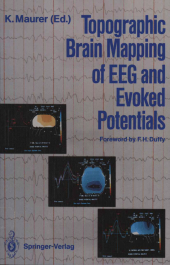 Neuerscheinungen 2011Stand: 2020-01-07 |
Schnellsuche
ISBN/Stichwort/Autor
|
Herderstraße 10
10625 Berlin
Tel.: 030 315 714 16
Fax 030 315 714 14
info@buchspektrum.de |

F. H. Duffy, Konrad Maurer
(Beteiligte)
Topographic Brain Mapping of EEG and Evoked Potentials
Herausgegeben von Maurer, Konrad; Mitarbeit: Duffy, F. H.
Softcover reprint of the original 1st ed. 1989. 2011. xvi, 576 S. XVI, 576 pp. 290 figs., partly in col
Verlag/Jahr: SPRINGER, BERLIN 2011
ISBN: 3-642-72660-7 (3642726607)
Neue ISBN: 978-3-642-72660-6 (9783642726606)
Preis und Lieferzeit: Bitte klicken
Imaging procedures have been used for many years and are becoming increasingly important in a number of medical disciplines. This is due to recent technological advances, primarily computerization. The meth ods employed in CNS diagnostics are collectively referred to as "neu roimaging" and include procedures for investigating both cerebral morphology and cerebral function, such as computed tomography (CT), magnetic resonance imaging (MRI), positron emission tomogra phy (PET), and single-photon emission computed tomography (SPECT). Topographic mapping of electroencephalograms (EEG) and evoked potentials represents one of the functional procedures and per mits topographic imaging of EEG, evoked potentials, and magnetic fields. The latter application includes not only magnetic fields evoked by stimuli relating to different sensory modalities, but also endogenous and motor fields resulting from spontaneous brain magnetic activity, as recorded by magnetoencephalograms (MEG), the magnetic comple ment of the EEG. The advantage of recording electric and magnetic fields over other neuroimaging procedures is that these techniques are completely noninvasive and have extremely short analysis times (in the millisecond range). The aim of this book is to clarify the current state of this emerging technology, to assess its potential for substantive contributions to brain research, to delineate areas for further research and, over all, to envis age clinical applications in disciplines such as psychiatry, neurology, and neuropsychology.


